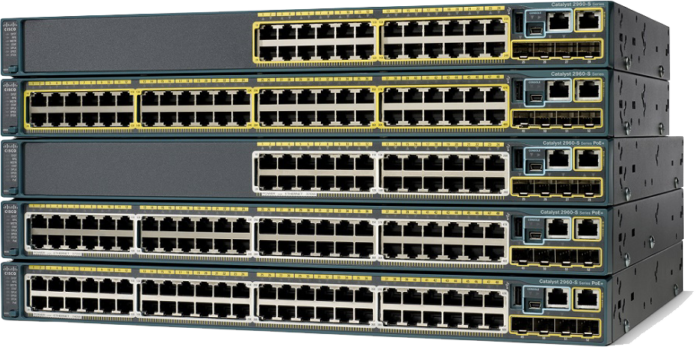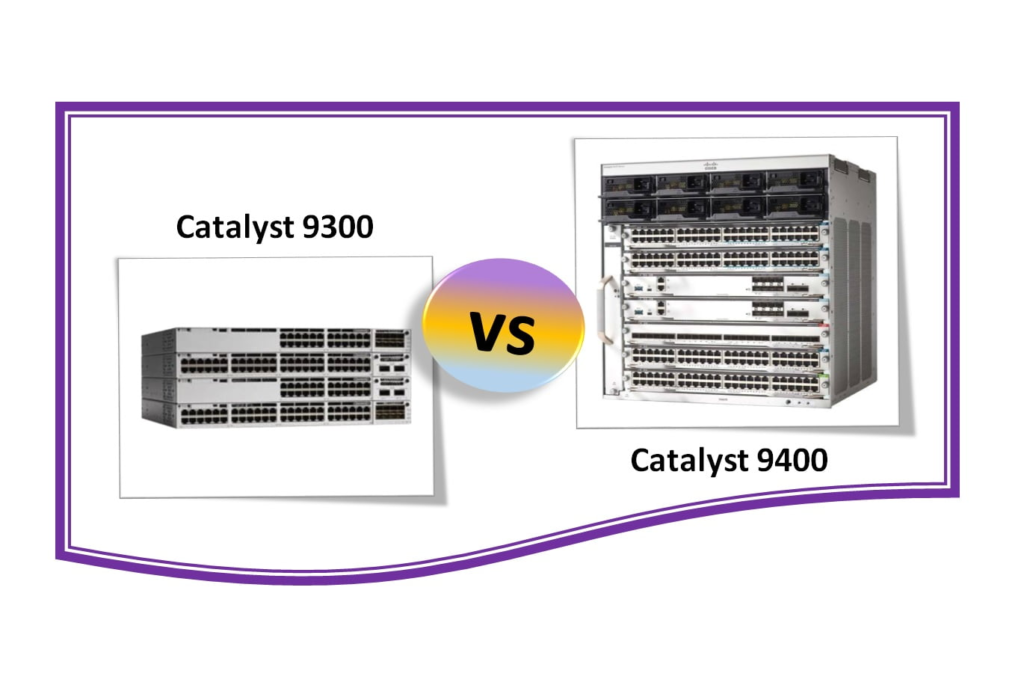Networks indeed form the spine of communication – whether internal, external, within the organization- whether it is collaboration or the success of businesses typically in this fast-paced digital world. And thus, here is Cisco-Electronics India’s, Cisco authorized partner, unparalleled revenue generator in networking solutions, especially so because of its range of Cisco switches. But, can you tell why would Cisco be the most sold and trusted switch globally? What is that makes their products different? So, how will one go about choosing the right switch from Cisco–Catalyst 9400 Series and the other Cisco-Catalyst 9300 Series?
What is a Cisco Switch?
The Cisco switch is a tool that enables multiple devices to connect on a local area network or LAN. These devices include computers, printers, and servers, allowing them to communicate with one another. This networking equipment does its functions with the reliability, performance, and scalability strengths of Cisco switches, which are reasons businesses of all sizes prefer them. The Cisco switch uses different configurations on the various applications. It suits anything from straightforward office requirements to an entire enterprise needing to link numerous offices.
There are two main types of Cisco switches:
- Layer 2 Switches: These devices primarily perform data forwarding based on the MAC addresses of devices within a network.
- Layer 3 Switches: These are capable of routing the data based on IP addresses the same way as routers but at switch speed.
Cisco switches are indeed the major component in maintaining fast, secured and reliable communication within a network. Efficiently, its purpose requires bringing high standards of managing data traffic in secure features such as VLAN support, QoS – Quality of Service, and enhanced security protocols.
Why is Cisco the Most Sold Switch Worldwide?
Cisco has gained recognition as the networking industry emperor, with the sold-out switches competing among each other in the world. However, what makes Cisco showers with these burning flames in the market?
1. Reliability and Performance
Their switches are performance driven and commercially high in reliability. Of course, businesses rely on a product from Cisco either to be trusted or to really handle much of their backbone networking. All devices the company has manufactured have shown consistent performance under varying loads, something uncommon to other manufacturers’ equipment. The company is focused on ensuring timely innovation so that their products are up to the trending requirements of the digital age.
2. Scalability
Cisco has fantastic switches for various categories of businesses-from small offices to large enterprises and data centers-each having its own needs. Their products are designed to scale easily and hence, are popular among businesses as reliable long-term solutions for networking.
3. Advanced Features and Security
They are equipped with an advanced security feature like encryption, authentication, and access controls to keep sensitive data secure. Along with this, Cisco also provides security, such as Cisco DNA Center and Cisco SD-Access, which enhance management for its products and make network configuration, monitoring, and troubleshooting easy.
4. Global Presence and Support
Cisco has a very extensive worldwide presence and is capable of providing excellent support and services to customers around the globe. Very good plans to keep their hardware and software updated: customer support, firmware upgrades, and an extensive community of users means a lot to businesses looking for long-term, reliable solutions.
5. Innovation and Integration with New Technologies
This is the approach through which Cisco innovates-making it a worthy competitor in the market and relevant in today’s marketplace through switches that are tailored for the dynamic networks of the future. Such approaches include integrating advanced technologies like AI, machine learning, and cloud networking into their ‘switching’ products.
Comparing the Cisco Catalyst 9400 Series vs. Cisco Catalyst 9300 Series
As far as the best Cisco switch for your network is concerned, between the Cisco Catalyst 9400 and Cisco Catalyst 9300 Series featured in this article, the two series enjoy a top position. Each provides amazing features and outstanding performance but suited for different network environments. Let’s take a closer look at these two contenders to help you make the right decision for your needs.
1. Design and Architecture
- Cisco Catalyst 9400 Series: A modular switch, Catalyst 9400 allows the user to add or replace modules, power supplies, and fan trays whenever it is growing into larger networks. Therefore, 9400 at best is pocket-friendly and suitable for large firms or data centers that require flexibility in network design, a high available network, as well as scalability. Modular design entirely future upgrades and high-density network configurations support.
- Cisco Catalyst 9300 Series: The Catalyst 9300 is a switch with a fixed configuration but stackable functionality. It includes up to 480 Gbps of stacked bandwidth and is designed for mid-sized to large campus networks. Fixed deployment makes it easy to implement, while the exquisite stackable nature allows for the continued expansion of capacity without added modular components.
2. Performance and Throughput
- Catalyst 9400: At rates of throughput of up to 9.6 Tbps, the Catalyst 9400 is truly engineered for a high-performance environment where massive traffic volume needs to be catered for. It’s perfect for the big data centers and core networks, as well as high-traffic enterprise.
- Catalyst 9300: Despite being a high-performance switch in its own right, the Catalyst 9300 Series excels more in the campus and branch-office segment. In the stack, it can achieve up to 480 Gbps of throughput capacity in a medium-sized network that demands high performance without the scale of the 9400.
3. Security Features
- Catalyst 9400: The advanced features of the 9400 Series are the Cisco Identity Services Engine (ISE) integration, Cisco Umbrella for cloud-based security, and SD-Access for network segmentation and policy enforcement. The above features help secure large, complex networks by ensuring that only authorized devices can access network resources.
- Catalyst 9300: The Catalyst 9300 Series complements its performance with sophisticated security features spanning Encrypted Traffic Analytics (ETA), Cisco TrustSec for network access control, and Cisco Secure Network Analytics, which help safeguard the medium-sized campus networks from network threats and allow secure transmission.
4. Deployment and Management
- Catalyst 9400: However, given the modularity of this device, it may very well take more time and expertise to deploy and manage, more so in complex, enterprise environments. Nevertheless, it affords far greater customization and flexibility, making it just right for larger organizations that call for tailored solutions.
- Catalyst 9300: For the 9300 Series, the deployment and management of both are really very simple, especially when it comes to organizations that require plug-and-play deployment speedily. They would also generally do well in making any form of configurations with the Cisco DNA Center that would, in turn, automate, monitor, and troubleshoot, just like for any other device.
Which Switch is Right for You?
Cisco Catalyst 9400 Datasheet
- You have a big and bustling farm with large power requirements and a lot of scalability as well.
- The network should also be flexible enough to add and expand modules in its architecture.
- It requires high security and high throughput for critical applications.
Cisco Catalyst 9300 Series Datasheet
- It is required to have a well-established high-performance network in a medium to large campus, which even need to be easily deployable.
- It needs an uncomplicated, fixed configuration, stackable solution, which makes it easy to manage.
- It would require rigorous assurances and irrefutable integration with Cisco’s cloud and automation technologies.





